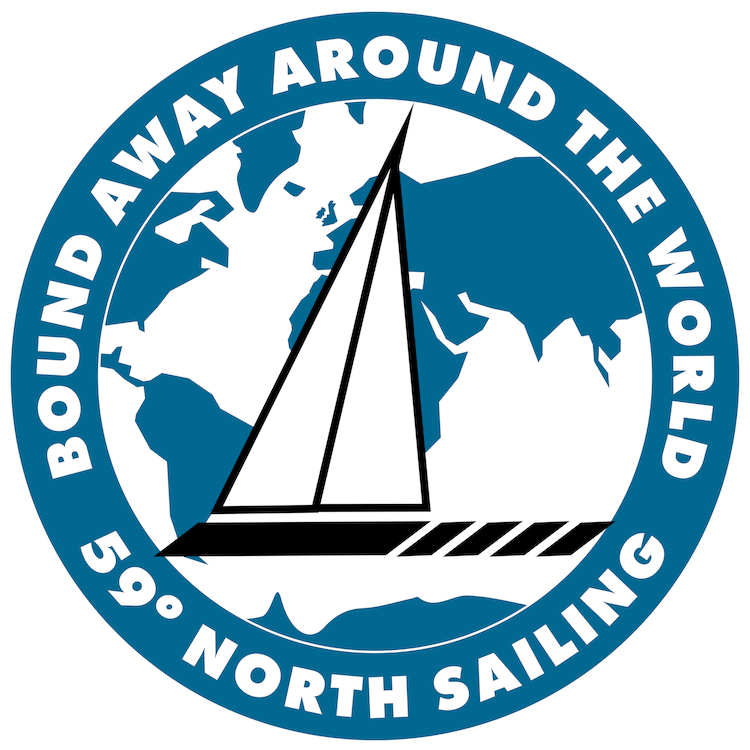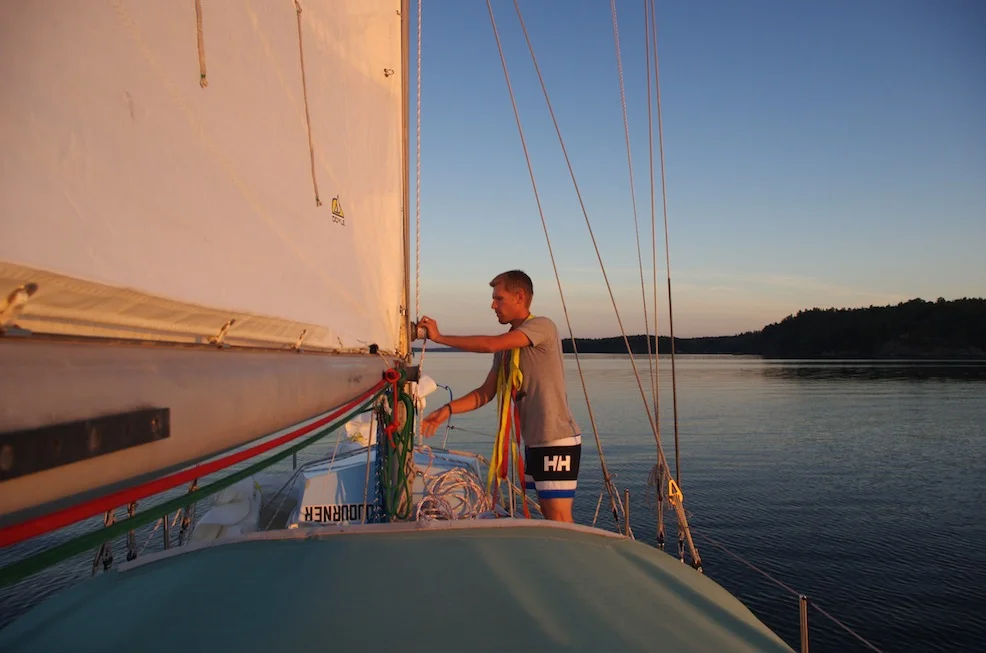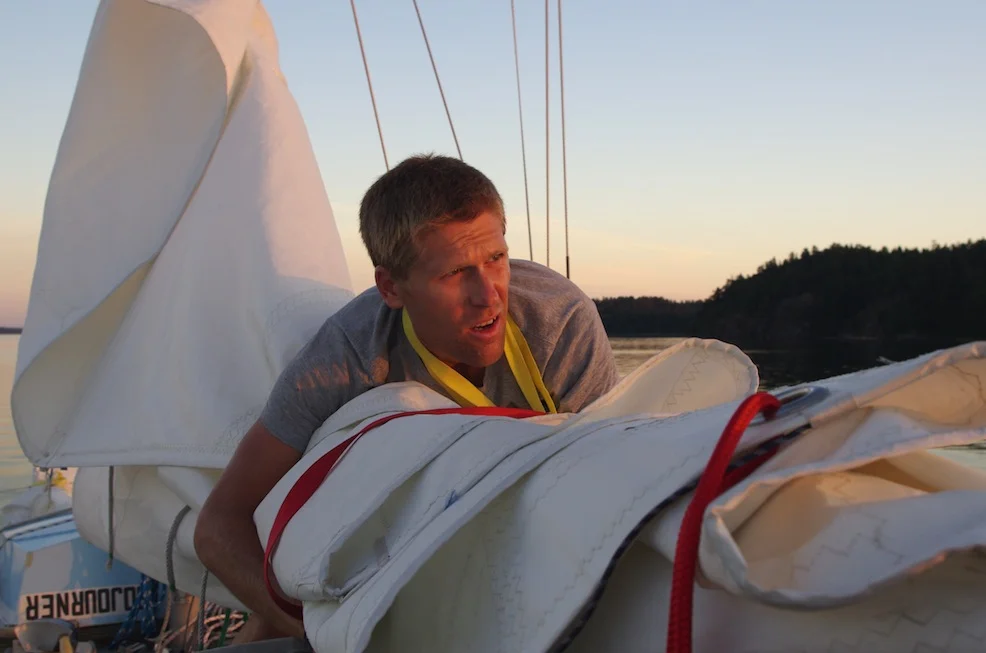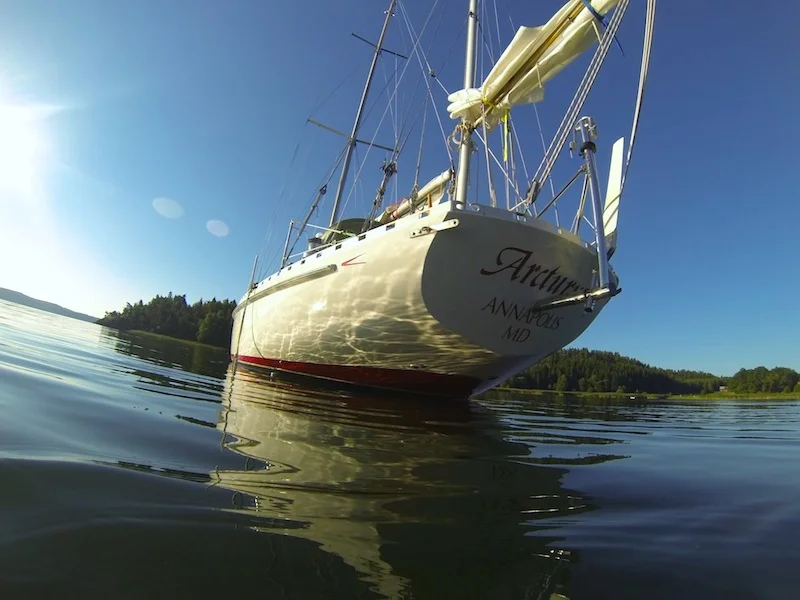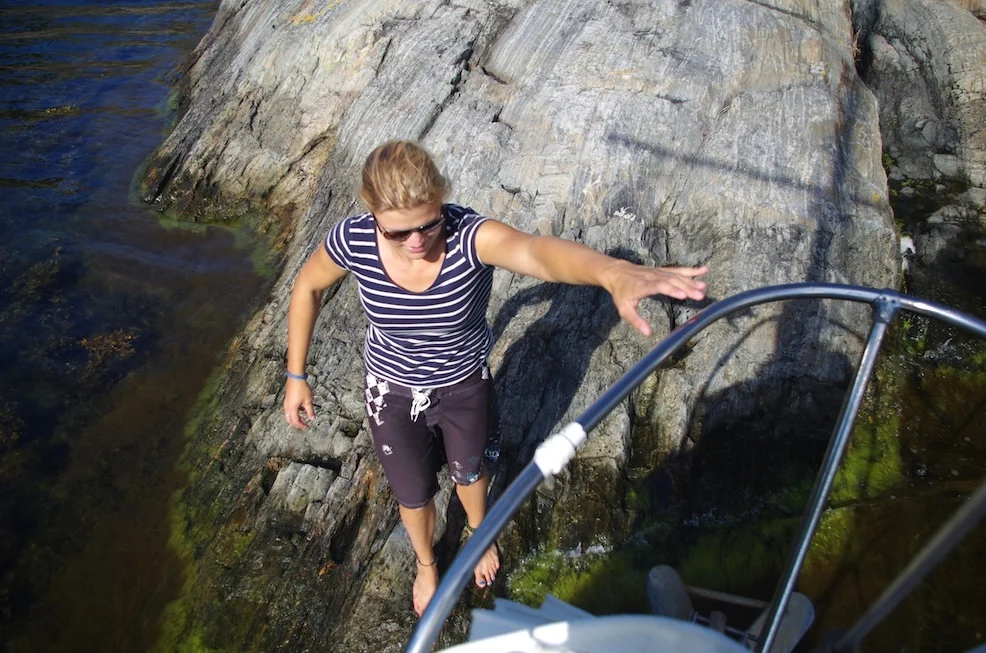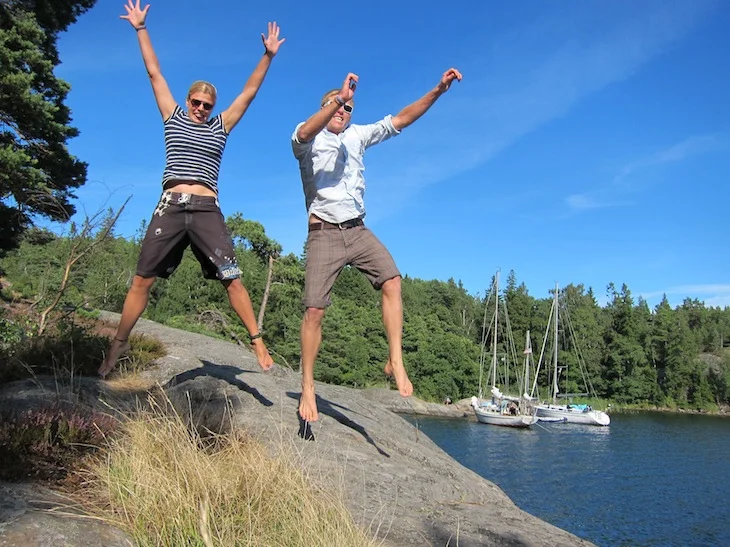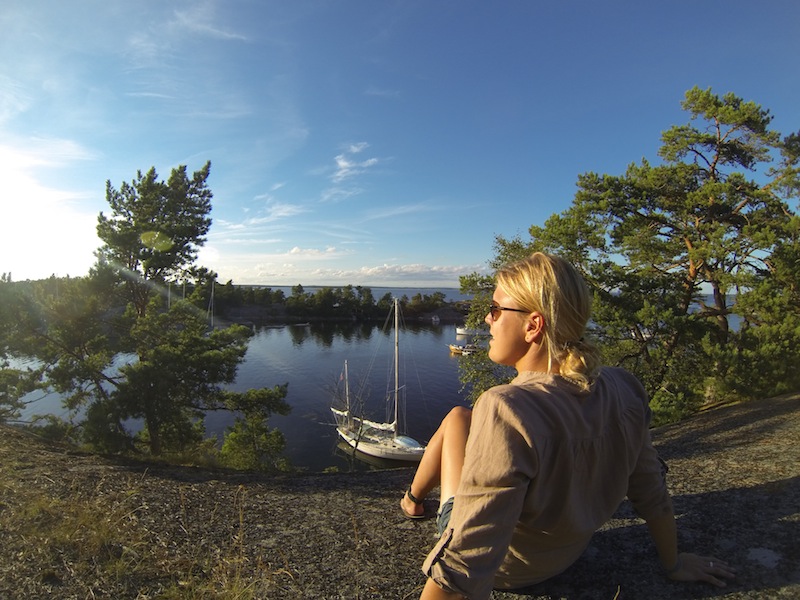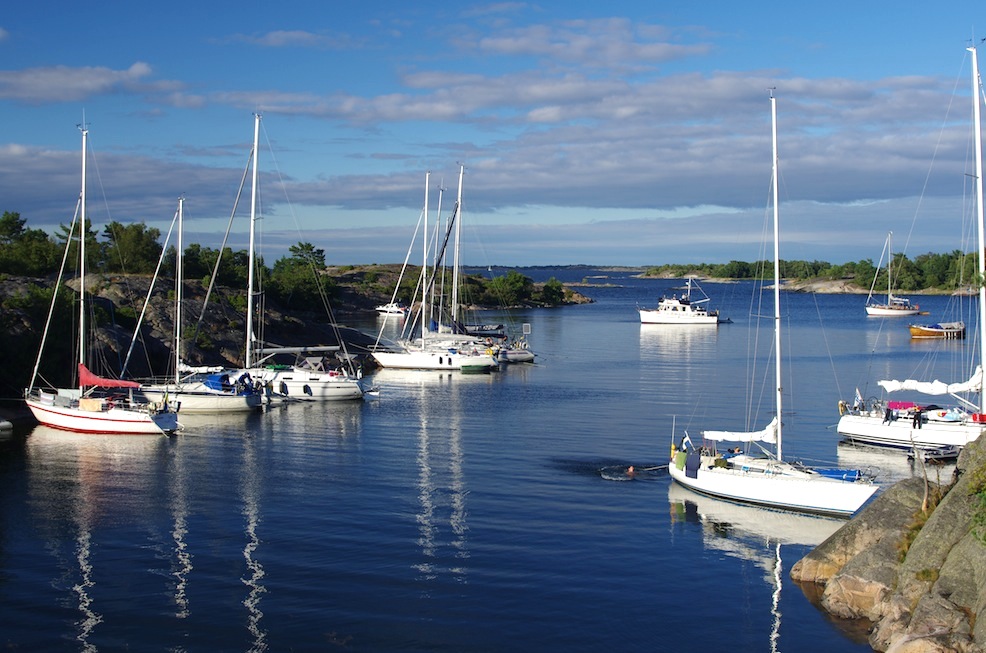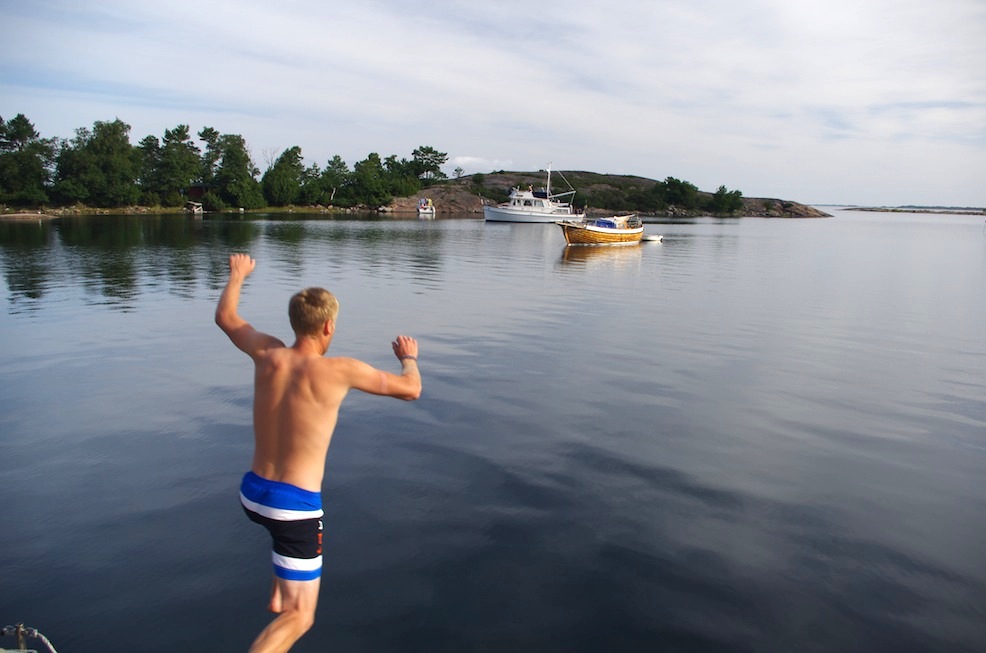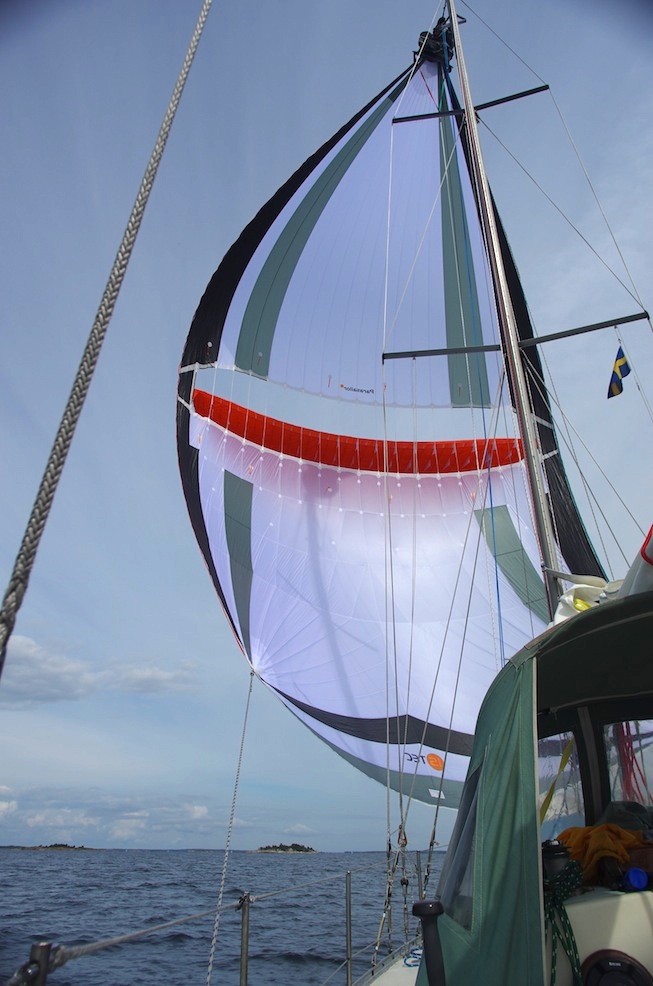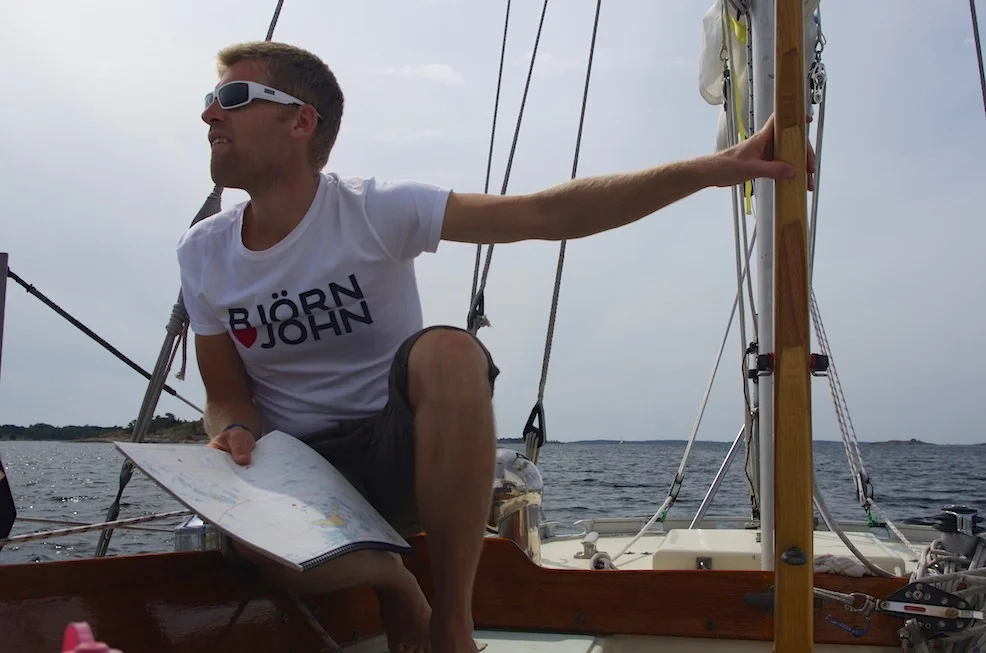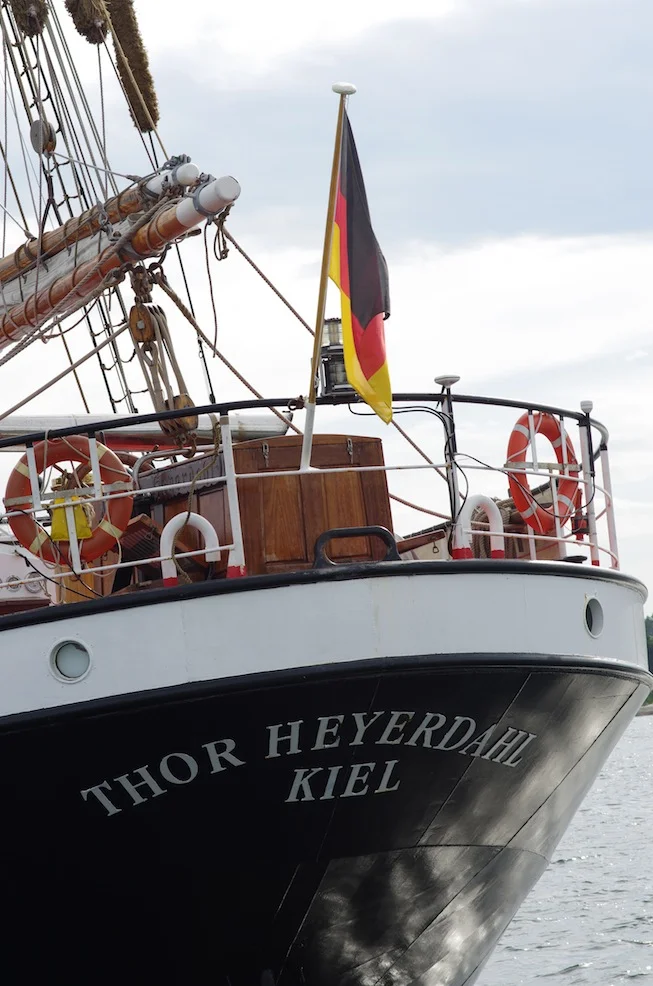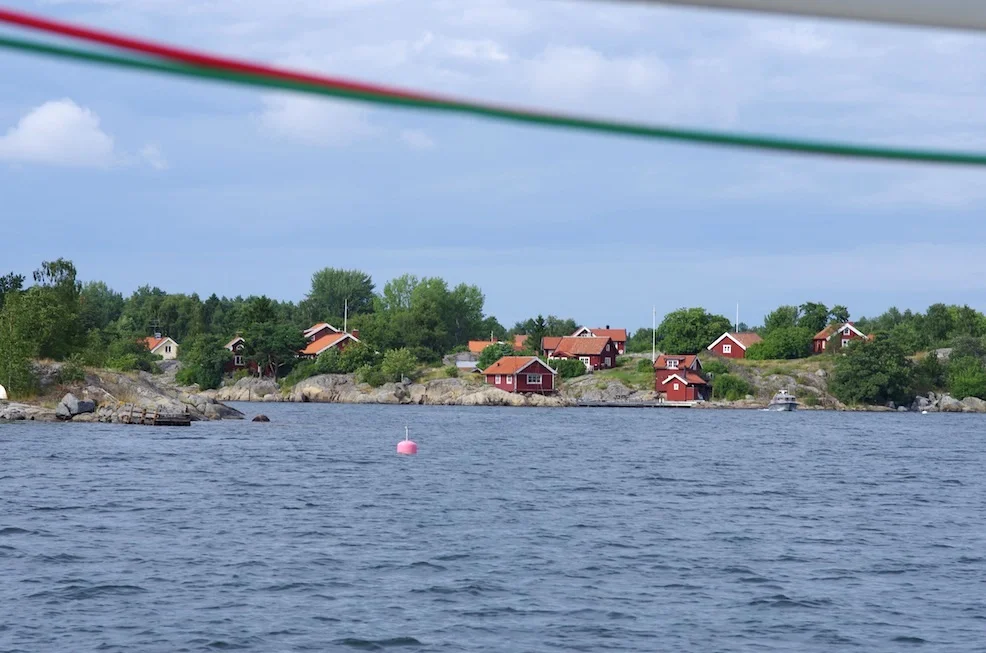And with the first part of that title, I’m referring to myself.
I actually stole it from the language program the Swedish government provides to new immigrants – 'Swedish for Immigrants,' it’s called. It’s abbreviated ‘SFI’, and the locals like to change the meaning of that last ‘I’.
I think it more or less appropriately describes our situation on Arcturus over the past week. This is the first time we’ve cruised the Stockholm archipelago (I don’t really count the time we brought the boat over from the west coast last year – that was more a delivery trip than anything, and we never saw the archipelago proper, rather sailed right on through it).
I’ll sum up the past three weeks in one long paragraph. Here goes. After Micah came from Annapolis to help us install the new Beta 16 motor (check out next month’s Spinsheet for that story), Mia’s friend Johanna helped us step the mainmast and came along for the maiden voyage with the new engine. The next day, Mia’s little brother Erik came by to step the mizzen mast, and we spent the weekend cleaning up the boat and getting ready to move onboard. We had a long trip out of Lake Mälaren, due to the fact that Danviks bridge in Stockholm was closed for the summer, so we had to take a lengthy detour through Södertälje and nearly around Landsort, a long peninsula that sticks out into the Baltic south of Stockholm (we managed to sneak through a small inshore passage, a fantastic little exercise in close-quarters sailing. We made the German guy under power in front of us look a fool). Our vacation began in the midst of this, and since then we’ve been enjoying our cruise en route to Åland, the archipelago about 40 miles out into the Baltic that belongs to Finland, but who’s people speak Swedish and have their own flag. This evening we’re moored bow-to the public pier on the outer island of Möja, in Berg, a small fishing village whose history dates back centuries. Which brings us to the present.
The cruising here in Sweden is decidedly unique. It takes some getting use to. For one, the navigation is crucial. The chart is littered with rocks and islets, some just below the surface, with narrow and winding passages connecting different fjärds, or more open fairways of water (the entire archipelago, if you count the visible rocks, contains upwards of 100,000 islands!). The further east into the archipelago you get, the harder this becomes – there are less marks, and the water is more exposed, as out here the islands become rockier and smaller. Thus far we’ve managed to navigate mostly without GPS, only occasionally plotting our position on the paper chart to double check. The landscape goes by so quickly, and there are so many recognizable islands and rocks, that it’s pretty easy to follow along the chart, marking off your progress, but you’ve got to pay attention.
Interestingly, there are no tides here, and incidentally, no currents, which makes things considerably easier. And in summertime, the weather is mostly fair, with light breeze. Three and four knots is all we’ve been able to make for most of the way, but it’s plenty fast when there are so many hazards around and so much to look at.
The cruising here is even more unique for the style of anchoring everyone employs. In short, this is accomplished by laying a stern anchor maybe 50 or 100 feet offshore, and nosing the bow in towards a cliff or big rock. The bowman then simply steps off the boat and ties off to a tree or metal ring that’s been installed in the rock. I’m guessing this is one of the few places in the world where the conditions are such that this is even possible – protected hidey-holes, no tides and steep shorelines. Boats of all types and sizes do this – sail and power alike – and it looks almost foolish when there is a bay full of boats anchored like this and only one or two anchored ‘normally’ offshore.
And it’s incredibly convenient, if not a bit intimidating at first. Our first go at it, down near the bigger island of Utö, it took us two tries to get it right, but we did. Yesterday the pressure was on in a little hideout on Biskopsön, as there were about a dozen other boats standing by watching as we pulled in on the opposite side of the little bay. Normally I don’t mind this, but when it’s something new and something I’m not comfortable with – heck, I wasn’t even sure we were doing it right, for that matter – it makes me a little tense. I tend to whistle when I’m focused, and yes, I’m aware of the bad luck associated with whistling on a sailing boat. It makes the tension even worse.
It’s actually been very cool to watch other people, cool as cucumbers, approach the cliffs like this and tie up as if it were the easiest thing in the world. Mia and I have been taking notes. We saw a young couple about our age pull in next to us down near Utö – they nosed all the way into the shoreline to check their intended spot for submerged rocks, then circled back around to drop the stern anchor and do it again, this time for real. We adopted that tactic today, again with onlookers present, and the first time we’d be coming in alongside someone else, fenders lowered (in fact, an interesting aside here is that by anchoring this way, you can fit vastly more boats into small places than otherwise possible anchoring off. At Biskopsön, we counted 18 boats in a bay that would only have accommodated maybe 4 or 5 laying at anchor in the normal way).
It’s slightly off topic now, but I have to add that we spent ¾ of our time on the water flying the Parasailor that the guys in Germany sent us for a test spin this summer. It’s been sitting in Mia’s parents’ house now for the last six weeks as we dragged out that repowering project to the limit, and now finally we got a chance to use it (I wanted to fly it offshore yesterday, when we made a big jump out and around the archipelago, in the Baltic proper, but Mia wisely shot that idea down. It was overcast and breezy in our little hideout, but when we got offshore, it was downright windy. We ended up blasting along under double-reefed mainsail and reefed down genoa, making 6-7 knots in a rather rough sea – compared to what we’d gotten accustomed to sailing inshore – and I’m sure now in hindsight that the crinkly new Parasailor would not have survived that afternoon. So good call Mia).
ANYWAY, we did use it today, finally, for several hours. My first impressions are that it’s ridiculously well-made – the freaking bag that it comes in is a work of art on it’s own, what with it’s compression straps and aluminum-coated bottom. The thing packs away like a down sleeping bag. The sail we ended up with is slightly too big for Arcturus, but given the choice of a little too big or a little too small, that was an obvious decision. I will still admit that the sails trademark ‘wing’ in the middle remains a bit intimidating – god forbid we ever wrap it around the headstay – but it did sail pretty nicely. Granted, it was flat calm and only blowing about 5-8 knots, but I liked it. The jury is still out on whether or not it’s a huge improvement over a traditional symmetrical spinnaker – for that I’ll need to really sail it offshore when a sea is running – but it is pretty freaking cool. And it’s nice and crinkly new!
So that’s that. I’m kind of caught up to the present, minus a few details. One more stop tomorrow in the archipelago and then we’ll make the jump over to Åland, which should be about a 40 or 50 mile sail, depending on where we end up tomorrow evening. The days are already getting shorter here in Sweden. It’s dark now, actually dark, by 10pm, and weirdly this is the last weekend of the summer high season (it’s August 10!). But we’re enjoying this coastal sailing more than I thought I would – it feels pretty good to step ashore each night and explore these new places. I’ll be ready for another ocean sail soon, I’m sure, but for now, I’m happy being mellow.
